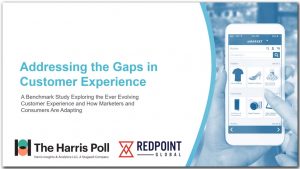 A Gartner report from December 2018 does not mince words referencing the importance of an integrated digital platform to optimize customer experience, among other objectives. “An unintegrated digital platform is simply an oxymoron” the report states, insisting that to make “customer experience, IoT, ecosystems, intelligence, and IT systems” work together, a digital platform must connect the capabilities at scale in a manageable way.
A Gartner report from December 2018 does not mince words referencing the importance of an integrated digital platform to optimize customer experience, among other objectives. “An unintegrated digital platform is simply an oxymoron” the report states, insisting that to make “customer experience, IoT, ecosystems, intelligence, and IT systems” work together, a digital platform must connect the capabilities at scale in a manageable way.
The report recommends that a managerial focus is just as important as technology investments to pursue a strategy that overcomes considerable integration challenges. Technology alone, in other words, will not eliminate the data and operational siloes that prevent marketing from delivering the hyper-personalized customer experience that has been shown to drive revenue. The Harris Poll survey commissioned by Redpoint makes this clear, with 37 percent of consumers saying they will stop doing business with a company that fails to deliver a personalized experience, and a full 63 percent claiming that a personalized customer experience is a standard service they now expect.
Break Down Departmental Siloes
Forward-looking companies that recognize that personalization is an imperative are forming digital marketing centers of excellence (CoE) to optimize digital transformation efforts. The COE ensures integration is not limited to the martech stack, but also breaks down departmental siloes that can hamper productivity.
One Redpoint customer, for example, attributes a CoE to a more than 800 percent increase in revenue per email. By assigning responsibility for segmentation, A/B testing, dynamic templates and tailored creative treatments to the CoE, the company not only developed a central strategy for more relevant offers but also prepared the operating model that the business-as-usual marketing teams used to quickly deploy personalization in their respective Business Units. The whole marketing organization was able to get up a steep learning curve much more quickly, leading to revenue lift of 73 cents per email, compared with eight cents for previous average campaigns.
What is a CoE, Really?
A Center of Excellence is a team apart; consider it special forces for your digital transformation. The CoE blazes new trails and circulates learnings to the rest of the organization, supercharging change. According to Gartner, a CoE (or what it calls an “empowerment team”) has five key attributes: the design and evolution of an integration strategy; implementation of a core platform; set up and enforcement of overall governance policies; training, support and help desk services to multiple personas, and the running of what it calls a “community of practice”.
These attributes distinguish leaders from laggards in blazing a fast path to differentiation as a digital-first, dynamic organization. A CoE puts even small or midsize enterprises on equal footing with a multinational with its far greater resources for organizing around digital principles. Smaller organizations or companies with lower levels of marketing maturity retain a CoE as a managed service. A team of experts embeds in your organization, establishes the innovation “lab” and trains the marketing team on new technologies, techniques and how to get results quickly.
A CoE cuts through internal politics that have deep-sixed many a technology installation. Department infighting, budget wars, egos, and stubbornness to adopt new technology or change processes can all stand in the way of a successful implementation, and a CoE – with backing and support from the C-level – helps smooth over the operational potholes that can easily throw a project off course.
Does My Company Need One?
Gartner provides a handy checklist for organizations to determine if a CoE is right for their companies. Conditions that warrant a CoE, according to the list, are when specific capabilities are needed, specialized knowledge is required, knowledge is difficult to acquire, and the capability is important to the business, among others.
For many marketing organizations, a mandate to deliver a hyper-personalized customer experience across channels certainly qualifies as a condition that would benefit from a CoE. According to a much-referenced research from Frost & Sullivan, by the end of next year it is anticipated that customer experience will overtake price and product as a key brand differentiator.
Delivering on this expectation requires marketing organizations to break the mold, eliminating the data and operational siloes that were organized for a bygone era. Organizations have continued to make technology investments to modernize their martech stacks to keep up with the personalization mandate but doing so without a CoE is akin to buying a Ferrari but keeping it in the garage because you don’t know how to use its awesome power. A CoE takes the machine out on the road with confidence.
RELATED CONTENT
How to Future-Proof Your Omnichannel Approach
Redpoint Global Cited in the Gartner 2018 Hype Cycle for Digital Marketing and Advertising
3 Obstacles to Maximizing the Value of Customer Data

